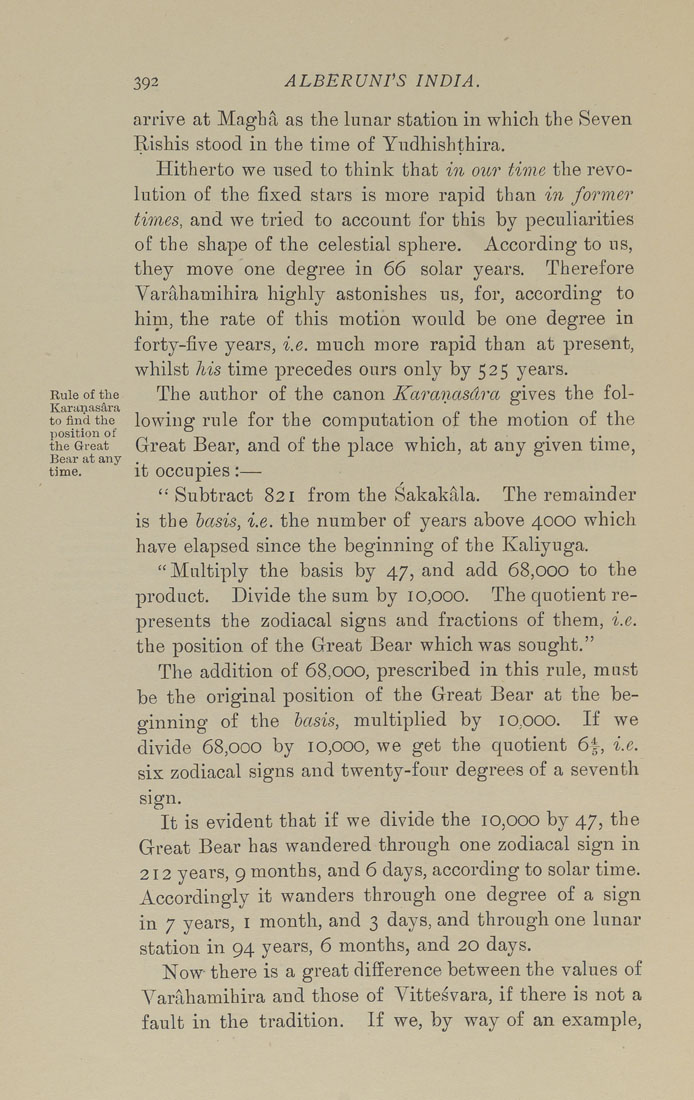392
ALBERUNPS INDIA.
Bule of the
Karanasdra
to find the
position of
the Great
Bear at any
time.
arrive at Magha as the lunar station in which the Seven
Rishis stood in the time of Yudhishthira.
Hitherto we used to think that in our time the revo¬
lution of the fixed stars is more rapid than in former
times, and we tried to account for this by peculiarities
of the shape of the celestial sphere. According to us,
they move one degree in 66 solar years. Therefore
Varahamihira highly astonishes us, for, according to
him, the rate of this motion would be one degree in
forty-five years, i.e. much more rapid than at present,
whilst his time precedes ours only by 525 years.
The author of the canon Karanasdra gives the fol¬
lowing rule for the computation of the motion of the
Great Bear, and of the place which, at any given time,
it occupies:—
"Subtract 821 from the Sakakala. The remainder
is the hasis, i.e. the number of years above 4000 which
have elapsed since the beginning of the Kaliyuga.
"Multiply the basis by 47, and add 68,000 to the
product. Divide the sum by 10,000. The quotient re¬
presents the zodiacal signs and fractions of them, i.e.
the position of the Great Bear which was sought."
The addition of 68,000, prescribed in this rule, must
be the original position of the Great Bear at the be¬
ginning of the hasis, multiplied by 10,000. If we
divide 68,000 by io,ooo, we get the quotient 64, i.e.
six zodiacal signs and twenty-four degrees of a seventh
sign.
It is evident that if we divide the 10,000 by 47, the
Great Bear has wandered through one zodiacal sign in
212 years, 9 months, and 6 days, according to solar time.
Accordingly it wanders through one degree of a sign
in 7 years, i month, and 3 days, and through one lunar
station in 94 years, 6 months, and 20 days.
Now there is a great difference between the values of
Varahamihira and those of Vittesvara, if there is not a
fault in the tradition. If we, by way of an example.
|








